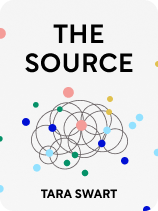

This article is an excerpt from the Shortform book guide to "The Source" by Tara Swart. Shortform has the world's best summaries and analyses of books you should be reading.
Like this article? Sign up for a free trial here.
Are you ready to reboot your life? How can you change your life for the better?
In The Source, Tara Swart offers a step-by-step process for putting your whole brain into action to create the future you want. This involves increasing your self-awareness, creating an action board, becoming more mindful, and actively establishing changes.
Continue reading to learn how to change your life for the better.
Step 1: Increase Your Self-Awareness
According to Swart, self-awareness is the first step to learning how to change your life for the better. This is what helps you identify and take advantage of opportunities for change. She describes several journaling exercises that can increase your self-awareness.
First, Swart recommends a journaling exercise to increase your awareness of how your childhood continues to influence you today. She explains that your upbringing, and particularly what you learned from the people you were attached to, strongly influences who you are today. These relationships served as models for you in childhood. They created neural pathways between triggers (like stress, poverty, and nourishment) and responses, giving you a blueprint for how to deal with the situations in your life. To keep these learned responses from controlling your life, you must be aware of them.
Swart recommends listing things like the roles you and other members of your family played when you were growing up, the secrets your family kept and how they impacted you, the beliefs and values your family held, and how your family viewed boundaries and rules. Consider how these things continue to impact you and write down ways in which you notice them in your life today.
Next, Swart recommends an exercise to help you more deeply understand the patterns and beliefs you picked up from childhood (many of which you’ll have noticed during the first exercise). She suggests listing six beliefs that restrict or obstruct your happiness. Then, for each one, describe the evidence you have to support that belief. Next, write down the evidence you have that contradicts that belief. Finally, reflect on whether these beliefs add or detract from your life, and how you might let go of the ones that don’t serve you.
Step 2: Create an Action Board
For the second step, Swart recommends creating an action board, or a visual representation of what you want to achieve. This will prime your brain to create the change you want by reminding you daily of your goals. Using a piece of paper, some poster board, or any other material that gives you a lot of space to work with, paste images from magazines or online sources that embody what you want to achieve in life. Place this board somewhere you’ll see it every day.
(Shortform note: While Swart uses the term “action board” instead of “vision board” specifically because it emphasizes the action aspect of manifestation, some people suggest that such boards only serve as a distraction, and that it may be better to devote the time you would spend making an action board to doing the actual work to achieve what you want. Others suggest that action boards may be more useful for visual learners (as opposed to auditory or kinesthetic learners) and that non-visual learners may get more out of a board that uses text instead of pictures or adapts to their unique learning style in other ways.)
Step 3: Become More Mindful
For the third step, Swart recommends that you deliberately focus your attention on your experiences as they happen, a practice commonly known as mindfulness but that Swart refers to as presence. Staying in the moment like this takes you out of your established patterns, which helps you clear old neural pathways that don’t serve you and create new ones that do.
To become more mindful, Swart recommends practicing mindfulness meditation, which is proven by brain scans to change the structure and connectivity of the brain, which in turn improves your ability to process the information your brain is constantly taking in. This could include a body scan like the one described in the “Physical Attunement” section of this guide. Swart also recommends yoga, or simply taking time a few times a day to deeply focus on the sensory stimulation of a given moment or experience (like eating a meal, taking a walk, or listening to music).
(Shortform note: Mindfulness practices have many benefits in addition to those that Swart describes. Research suggests they can help you improve your ability to sustain your attention and block out distractions, which can help you with the selective attention aspect of manifestation described earlier in the guide. Mindfulness can also enhance your ability to relate to others, improving your relationships. It can be difficult to make Swart’s mindfulness practices a habit, but you can make it easier by joining communities where other people will help you in your practices.)
Step 4: Practice
The neural changes Swart describes don’t happen easily or quickly. They require you to actively and regularly devote your whole brain to establishing and reinforcing these changes. All of the principles and steps described above will propel you through the final step.
She recommends identifying the barriers lying between you and the life you want. To do this, draw three columns on a piece of paper and write your goals in the first column. In the second, write the behaviors that are interfering with you achieving these goals. Consider the behavioral patterns you see playing out. In the third column, write down the beliefs that are motivating these behaviors. These are what stand in the way of you achieving an abundance mindset, which in turn halts your progress toward your goals.
Swart also recommends creating a list of affirmations. Write down several inspirational quotes (from books or movies, from people you respect, or directly from your own brain), and repeat them to yourself multiple times a day. This will cement them in your brain and help move your goals from your subconscious to your conscious mind.
Additionally, Swart recommends pushing yourself into new experiences. This will help you overcome the fear of failure that can be so debilitating in creating the future you want. New experiences trigger neuroplastic change in your brain and give you a wider understanding of the world around you. These new experiences can be small or large. For example, you could go hiking on a trail you’ve never been on before or listen to a new genre of music.

———End of Preview———
Like what you just read? Read the rest of the world's best book summary and analysis of Tara Swart's "The Source" at Shortform.
Here's what you'll find in our full The Source summary:
- How to get the most out of your brain by tapping into its immense power
- How to use the major principles of the Law of Attraction
- The four-step process to change your life






